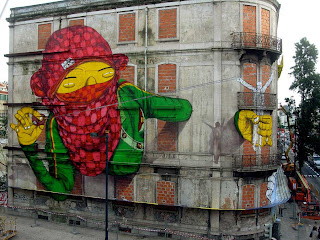When Portuguese founded Brazil, they named it after a tree, “Pau-Brazil” due to its abundance of producing Brazil nut. Originally named, ‘Terra de Santa Cruz’ (Land of Santa Cruz), the country tried to distance itself for the territory that France was interested in occupying. In an attempt to hide Brazil’s connection to Santa Cruz, it was renamed Brazil.
Not many know, that Brazil is the longest country in the world spanning to almost 2,800 miles (4,500 km) from north to south and has the largest river, the Amazon on the basis of water volume. Along with having a fantastic variety of wildlife, there are up to four million species of plants and animals. Brazil inhabits one third of the world’s 300 monkey species. Over the last 15 years, 14 new species of monkeys are discovered there.
Brazil started developing a reputation for crime and violence in the 1980s due to massive debt that left necessities such as police, hospitals and schools deprived of revenue. Things started to look up in the early 1990s when the government was able to decrease its debt and reintroduce money into public services, starting with the police department and slowly the crime rates began to fall. Tourism is a top priority and their protection and comfort is the government’s responsibility.
Today, the economy is booming and Brazil is evidently growing strong across different sectors such as marketing and communications, creating a new sense of national confidence and identity. There is an increased sense of social mobility that comes with poor residents having greater purchase power. As markets get competitive, the wide gap between rich and poor is decreasing. However, such an economy spectrum has also made Sao Paulo, the capital of Brazil, one of the most expensive cities to live in the world right now.
Brazilians are known to be warm and friendly people due to their interaction with tourists on a regular basis. Hot climate allows them a great deal of time to be outdoors and chat with people, making them inevitably outgoing and gregarious. Not to forget, men love to stare and pass comments at women as they walk by. The natives of Brazil take pride in being free spirited, resent being told what to do and tend to be very opinionated. On seeing them arguing with vigor for their convictions, visitors often get offended and tend to believe that they are angry in general. Often laidback and extremely casual, they view time as a sequence of events rather than hours, minutes and seconds.
Language is one of the strongest elements of binding together Brazil as a nation. Portuguese is spoken by nearly 100% of the population. Not surprisingly, over 200 languages exist today, and estimates claim the country had inhabited around 800 languages at some point. Brazilians love to talk and they do it effortlessly. It is no wonder then that the nation’s passion transcends to new communications technology, regularly topping charts globally for the most amount of time spent online in social media usage.
Brazil is a melting pot of creativity. Art, music and dance is present everywhere and is magnified during Carnival which takes place annually for which people prepare for year round. Another thing the country is immensely popular for its rich mixture if races and ethnicity from where artists get their inspiration from.
Many original Portuguese settlers married native women which created a new race called, ‘Mestizos’ and descendants of Portuguese and African slaves are called, ‘Mulattoes’. Slavery was abolished in 1888, which overtime blurred racial lines. Brazil is also home to the largest population of Japanese citizen, outside of Japan.
Family life is considered to be the foundation on the basis of stability, closeness and assistance for most people. Families tend to be large, although this has been diminishing in recent years. Nepotism is considered positive as it implies that employing people one knows and trusts.
Despite the mixing of ethnicities, Brazil is obsessed with class system. Social discrimination of the basis of skin color is considered normal. The upper and middle class only have brief interactions with lower class, usually consisting of maids, drivers, etc. Due to the great disparity and wage differentials, lifestyle and social aspirations are also different amongst different classes.
Women are typically found in lower paid jobs such as teaching, administrative support and nursing, even though they make 40% of the total workforce. The 1988 constitution prohibits discrimination against women, but it still exists. The one place that it doesn’t is in the government, the current President Dilma Rousseff who is a woman, being a prime example.
Palak Singh
3753
.gif)





.jpg)
No comments:
Post a Comment